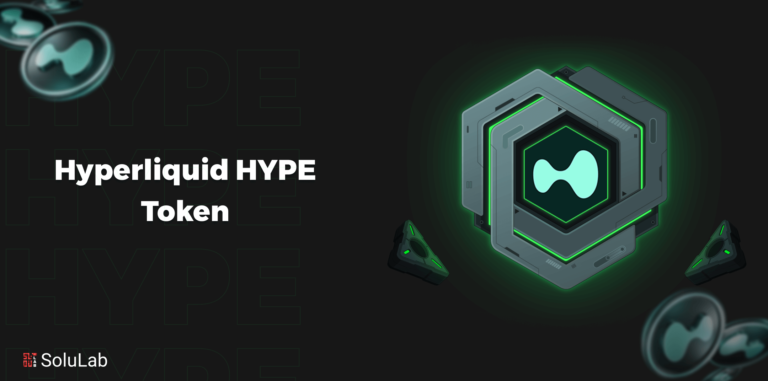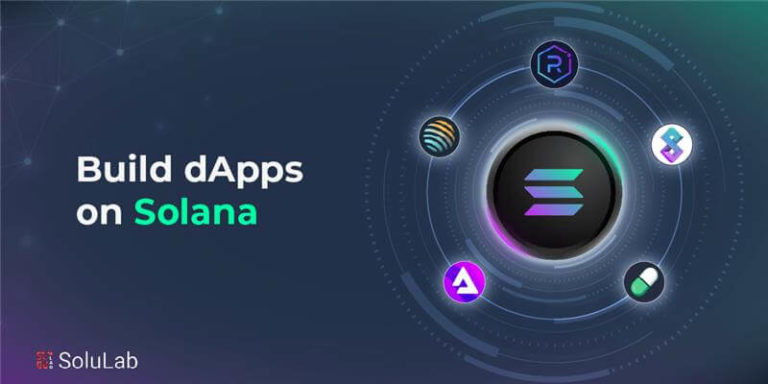
We always put more effort into finding the best software development company in USA or elsewhere than the technologies that go into building a solution. The technology stack of software development is the nuance of new possibilities, new trends, and technological advancements that push the very potential of software development to deliver next-gen solutions.
This may sound mighty, but the technology stacks are indeed nothing but the ingredients used to create perfect software, just like you use food ingredients in your kitchen to make any delicacy.
However, technology stacks, like different ingredients, can be used to create different or the same software. This is what developers and IT professionals call “stacks of technologies,” which are at points altered and used to develop solutions to cater to specific needs, also known as “custom software development.”
But as we know, it all comes down to some of the best, capable of delivering fine-tuned software applications. So here are some of the best technology stacks for software development that, in our opinion, excel in IT development practices.
What is Technology Stack?
Software development began with programming languages that could perform a specific task as commanded in the codes. This element became the first stack of software development technology for creating sophisticated programs.
Later, as it evolved, the world started to rely on electronic equipment, which created a need for software programs to match the pace and reduce the complexity of using electronic products.
And the revolution started, and new emerging programming languages in the 80s and 90s gave birth to some of the supporting elements known as frameworks, libraries, and tools. These supporting elements elevated the potential of software’s operability in every industry and made them more efficient to use. As a result, these supporting elements became the other parts of the technology stack.
So to put it simply, the technology stack is nothing but a set of tools, frameworks, libraries, and programming languages used for the creation of sophisticated software solutions.
Technology stacks examples- Java, Python, C, NodeJS, ReactJS, MySQL, Apache
Why Do We Need Technology Stacks?
A technology stack is the foundation of software that comprises the right database, framework, libraries, and UI elements to create solutions according to specific needs and requirements.
The fate, viability, and competitiveness of software depend on what tech stacks companies use. And the choice of the stack has a long say as it influences,
- The purpose of the solution
- How the solution works
- How it will cater services to the audience
- How it will work and behave shortly
- The choice of data storage
- The solution, its scalability, and maintenance
- The capacity of the server to sustain the solution
Moreover, the tech stacks are necessary to eliminate the risk factors and any challenges in software development to grant better agility in developing sophisticated solutions for maximum outcomes.
Elements of Technology Stacks
Have you ever thought about how your favorite software and applications work? The layout they have and how it changes when you click something and how some information shows up in a second. It’s all because of two sides of software.
Read Also: A 5-Step Guide To Successful Software Development Outsourcing
The technology stack is divided into two different categories: the front end, the interactive part that users see, and the back end, the part that users can’t see but that contributes equally to smooth software functioning.
Any top software development company in USA or elsewhere relies on these components to create sophisticated solutions.
Moreover, the companies have roles divided into the same categories, with front-end developers and back-end developers each committing to serve their respective sides.
Front-end
The front end includes all of the software components that users can interact with, such as buttons, layout, and content format. In other words, it’s the visual representation of software codes and their functionality for a task in a simpler manner.
The frontend/client-side tech stack involves the creation of user interfaces, user interactive graphics, and representations, layouts that deliver an exceptional user experience.
It includes everything from page structure, layout, design, and graphics, to interactive buttons, styles, and schemas that make software applications more appealing and eye-pleasing.
-
Backend
The backend is the part where all the activities happen, from data sharing to database operations to command execution. This part is not visible to users as it takes place on a server situated far away at data centers; hence, it’s also known as server-side.
The backend part has all the business logic and operates on CRUD (create, read, update, and demand). Some of the crucial elements of the backend are programming languages, databases, and frameworks.
Best Technology Stacks For Software Development
There are multiple tech stacks used by developers, IT professionals, and companies to get the results and solutions they need, calibrated just for a specific area of industry. Let’s shed light on each and grab some insights.
1. LAMP
The industry’s standard, LAMP, is one of the best technology stacks. It is mostly used for web development to get code efficiency, performance, and flexibility. LAMP has many layers, and most of them are free-to-use or open-source, which is useful for small businesses and startups as they run on a tight budget.
Moreover, it’s affordable and platform-independent which means it is capable of utilizing solutions for all types of platforms. The LAMP stack is crucial for those who require sustainable market outcomes, as some of the popular open-source CMS such as Drupal and WordPress are built upon it.
The LAMP stack contains:
- Linux (OS/Platform)
- Apache (HTTP Server)
- MySQL (Relational Database)
- PHP (Programming Language)
2. MEAN
MEAN uses JavaScript on all ends, because of which developers get to reuse codes at any point of development, which increases productivity and decreases the groundwork of writing the same principles over and over again. This also assures better future development practices, as it only relies on JavaScript. It is most suitable for those who want a future-proof solution that can be scaled without worrying about any technological dependencies.
Visit Also: Hire Mean Stack Developers
MEAN stack consists:
- MongoDB (NoSQL Database)
- Express JS (Backend Web-Framework)
- Angular JS (Front-end Framework)
- Node JS (Server-side JavaScript)
The only thing developers and IT companies should consider here are the front-end framework, as Angular JS and its support were discontinued by Google, the company that built it. Instead, developers and companies can replace it with another front-end framework.
3. MERN
MERN is much like MEAN, the only difference is that it uses React instead of Angular, and focuses more on the user experience and caliber solutions that look more elegant and appealing.
MERN contains:
- MongoDB (NoSQL Database)
- Express JS (Backend Web-Framework)
- React JS (Front-end Framework)
- Node JS (Server-side JavaScript)
When you choose React, you get the easiest approach to building front-end elements with React integration. This facilitates coding on both servers and browsers at the same time.
Another part of MERN that stands out is its functional libraries, especially their large amounts, which offer developers the option of heavy customization. And since it’s free to use, it can be used by anyone who wants to create elegant software applications.
4. ASP.NET
Every developer and company in the world has heard of ASP.NET and its capabilities. It’s the best stack when you decide to develop software. Even so, Microsoft has made improvements to the older ASP.NET technology stack, making it a much lighter tool for development. The technology stack is capable of running on both Linux and Windows platforms to create native software applications.
Here are the software application used in ASP.NET
- ASP.NET (MVC framework)
- IIS (Microsoft web server)
- Typescript (front-end framework)
- SQL (Enterprise database from Microsoft)
- Microsoft Azure (Cloud service)
5. MEVN
If the MERN and MEAN stacks do not align with your software development type, then MEVN is right for you. It replaces the Angular framework from MERN with Vue JS as a front-end framework.
Vue JS is exceptionally good when it comes to building resilient and high-performing software thanks to its MVC-based architecture. The only downside here is that developers may have to rely on some third-party plugins and libraries to make the most of Vue JS.
The MEVN stack contains:
- MongoDB (NoSQL Database)
- Express JS (Backend Web-Framework)
- Vue JS (Front-end Framework)
- Node JS (Server-side JavaScript)
6. ROR (Ruby on Rails)
Based on MVC architecture, ROR is among the most popular tech stacks for creating the most efficient and elegant software without compromising on performance.
ROR offers plenty of features, libraries, gems, and some advanced techniques, such as metaprogramming, and DSL writing, to facilitate fully loaded custom software development. With such tremendous tech advantages, Ruby on Rails is loved by many, and companies such as Airbnb, GitHub, and others have used the ROR tech stack to make scalable solutions.
ROR is well known for its aesthetic and eye-pleasing software development, which is generally used in conjunction with MySQL databases. It eases out developers’ work by introducing techniques such as DRY, low code, and others for better productivity.
7. Serverless Stack
The term “serverless stack” refers to the use of cloud platforms to build software services and make them available to customers on the cloud. It is a revolutionizing tech stack that offers nothing but advantages to software firms on all ends, such as cost-efficient software development and deployment, regular maintenance, and system upgrades.
If a company wants to gain digital agility by diversifying its operations on cloud services such as SaaS, a serverless stack is the best option. This makes infrastructure management easy with efficient operations and high scalability.
The Verdict, Which Tech Stack is Best
All the technology stacks listed in this article are capable of elevating any software development practice, but there are some things to consider, such as the type of development. Since companies develop different types of solutions, they have to choose the best technology stack for that specific need.
If a company decides to develop web applications, then it’s best to choose LAMP, MEAN, MEVN, or ROR, as they are originally targeting the web development domain. Other listed tech stacks can be used to develop websites as well, but they are not calibrated for those specific requirements.
In the case of mobile app development, ASP.NET, MERN, and ROR can be used as they offer plenty of libraries, plugins, and elegance required for mobile apps.
Alternatively, if an organization requires cloud infrastructure for software, then choosing a serverless stack makes sense as it targets software creation and delivery via cloud platforms.
However, these tech stacks can be altered at times, such as by replacing technologies as per projects’ requirements or clients’ needs to calibrate products accordingly.
So this means it all depends on the preferences and requirements of the project, company, and clients.
Final Words
There you have it, the best technology stacks for software development.
Each technology stack is distinct and offers something unique that you may admire for your software development practices or even despise in some cases. That’s why the choice of the best tech stack comes down to your personal preferences, opinions, and the project’s requirements.
Nonetheless, you can alternatively use different technologies combined with a tech stack for different development domains to obtain maximum outcomes and retain clients for a longer period.
FAQs
1. What Factors Should You Consider When Opting for a Technology Stack?
The right technology stack is essential for quality software development aligned to the specific needs of a business; hence, when opting for tech stacks, these points must be thoroughly considered – project size, complexity, scope, audience, and objectives, teams’ knowledge of technologies, required database, security protocols, scalability of the solution for future operations, time to market and end-user experience.
2. Why Are Technology Stacks Essential for Software Development?
Technology stacks are the foundation of software solutions. With these, a company can build solutions that are robust, efficient, resilient, performant, and secure, for better outcomes and to facilitate the reach of business operations. Hence, it’s suggested to choose the right technology stack by assessing their pros and cons for better development practices.
3. What Are The Most Common Technology Stacks?
LAMP, MERN, MEVN, and ROR are some of the most commonly used technology stacks for software development, because of their huge sets of plugins, code libraries, and additional features.
4. What Problems Might Occur If Used The Wrong Technology Stack?
The wrong technology stack can cause problems, and they might just keep piling up until the solution becomes hard to repair. For instance, performance issues, vulnerabilities to security, decreased scalability, growth crisis, and maintenance issues.
5. Is It Possible To Transition From The Incorrect Technology Stack To The Correct One?
The migration from the wrong technology stack to the right one is possible, but it’s a tedious process that consumes an awful lot of time. And, if it’s necessary, working with professionals or an IT firm like SoluLab to get every aspect of the product calibrated and geared by the right tech stack for skyrocketing growth is highly recommended.
SoluLab is the place for all your development needs. It is the best software development company in USA, from which you can hire software developers in USA for custom software development, web, and mobile app development, or any other service.




